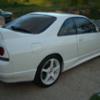Rb26 Rocker Cover Mounted Catch Can Install
Announcements
-
Similar Content
-
Latest Posts
-
Listening to pearl jams best of. Used to dislike them, but have grown into it.
-
Sorry I'm late to this, but if you're still looking or for others who happen upon this, pretty sure these are what you're(and I'm) after..... https://www.kmakaero.com.au/r32-skyline-gtr-rear-spats-for-gtr https://www.obsessionr.com/products/muse-japan-bnr32-n1-type-rear-spat-set I'm personally interested in the Muse set, as they are also made out of ABS instead of fibreglass.
-
If that's the wiring from the factory, I'd be inspecting the loom everywhere. Any signs of that anywhere else, and seriously, I'd get rid of the car ASAP before the electrical gremlins make it worthless, or it goes up in flames on its own. That is scary how that insulation is failing!
-
By welshy_32ZILA · Posted
I should note too as I have all 4 wheel speed inputs to the emtron I now have the emtron controlling the attessa solenoid for 4wd/traction and launch control strategies.
-






Recommended Posts
Create an account or sign in to comment
You need to be a member in order to leave a comment
Create an account
Sign up for a new account in our community. It's easy!
Register a new accountSign in
Already have an account? Sign in here.
Sign In Now